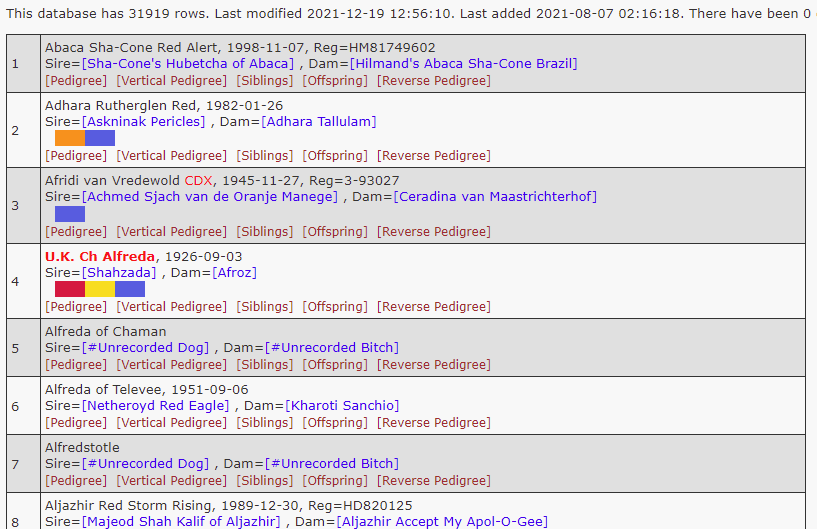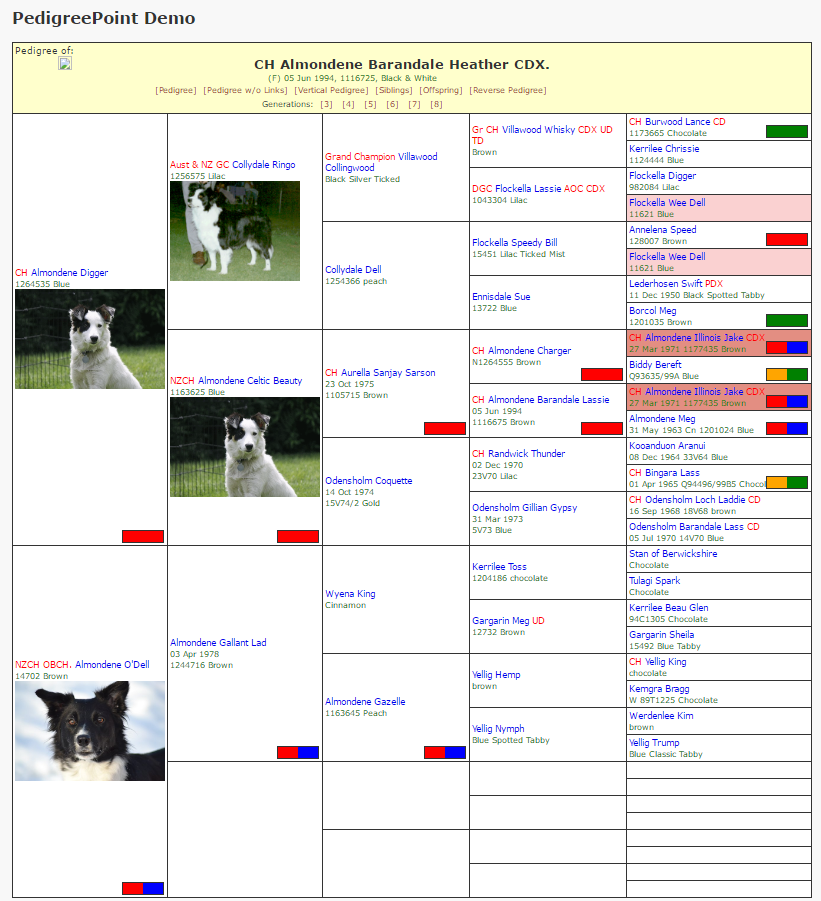Marks
Marks are demonstrated on the pedigree on our home page. A mark is a block of distinct color which can be placed against and entry to indicate something about the entry, e.g. it may be carrying certain color or coat genes or has some genetic defect. There are up to 16 mark colors available in Pedigree Publisher. Marks are dislayed in two places firstly search results and second in pedigree reports.
Here is a screenshot of a pedigree showing marks on some ancestors.
Marks are stored in the _Marks field of the pedigree table as an integer. Only the lower 16 bits of the integer are used to store marks in Pedigree Publisher. Each mark corresponds to a specific color which will be displayed in a block in the lower right hand side of the entry's cell in the pedigree view.
The bits are defined as follows:
- Bit 0 red
- Bit 1 orange
- Bit 2 yellow
- Bit 3 green
- Bit 4 cyan
- Bit 5 blue
- Bit 6 blueviolet
- Bit 7 deeppink
- Bit 8 darkblue
- Bit 9 darkgreen
- Bit 10 darkcyan
- Bit 11 chocolate
- Bit 12 darkgoldenrod
- Bit 13 greenyellow
- Bit 14 orchid
- Bit 15 seagreen
In the sample above "Almondene Illinois Jake" is displaying red and blue marks which means its _Marks field in the pedigree table must contain (1 << 0) + (1 << 5) = 1 + 32 = 33.
So where do these marks come from. If you use a program like Pedigree Publisher or Pedigree Cloud to maintain your desktop database, it provides many functions to mark records. You can manually mark a record or use any of the many in-built marking functions.
To use Marks you will also need to ensure the export expression string in your PedPoint Export dialog
and also the schema of your pedigree databases has the _Marks field. Each pedigree table must have an additional field called "_Marks" of type Integer.
The export string will need to include a _Marks to output the marks data. A typical export expression would be:
%2, '[Name]', %3, %4, '[Sex]', '[DOB%1]', '[Titles]', '[Obedience]', '[Reg No.]', '[Colour]', '[Photo]', [_Marks]


